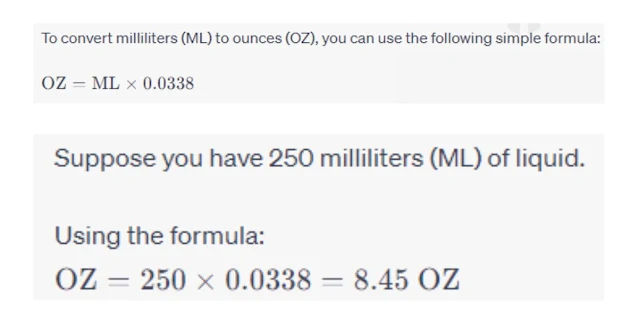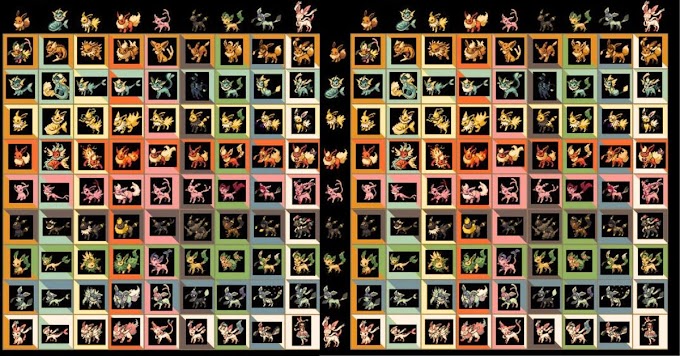ML to OZ Converter
In today's globalized world, understanding different units of measurement is essential, especially when dealing with international recipes, scientific experiments, or travel. One common conversion is between millilitres (ML) and ounces (OZ). This article will delve into the definitions, histories, conversion formulas, and methods to convert ML to OZ and vice versa.
How to Use Milliliter (ML) to Ounce (OZ) Converter
- Put the number of millilitres (ML) in the box, and it will quickly show you how many ounces (OZ) that is.
- If you want to change ounces to millilitres, click the 'Swap Units' button and adjust it. The answer will show up right away.
See Also: CGPA to Percentage Converter
What is Milliliter (ML)?
A millilitre (ML) is a unit of volume in the metric system, representing one-thousandth of a liter. It is primarily used to measure liquids and is equivalent to approximately 0.0338 fluid ounces in the United States customary system.
History of Milliliter (ML)?
The milliliter, as part of the metric system, has its roots in the late 18th century during the French Revolution. The metric system was devised to establish a universal and coherent system of measurement, promoting ease of communication and trade.
What is Ounce (OZ)?
An ounce (OZ) is a unit of mass and volume commonly used in the United States customary and British imperial systems. In terms of volume, it is approximately 29.57 millilitres, or precisely 1/128th of a U.S. gallon.
History of Ounce (OZ)?
The ounce has a rich historical background, with its origins tracing back to ancient civilizations such as the Roman Empire. Over centuries, its definition and usage have evolved, leading to variations like the avoirdupois ounce and the troy ounce, each serving specific purposes in various industries.
ML to OZ Formula
To convert millilitres (ML) to ounces (OZ), you can use the following simple formula:
OZ=ML×0.0338
How to Convert ML to OZ
Converting milliliters to ounces is a straightforward process using the ML to OZ formula mentioned earlier. You simply multiply the number of milliliters by 0.0338 to get the equivalent amount in ounces.
ML to OZ Conversion Example
Let's take an example to illustrate the conversion:
Suppose you have 250 milliliters (ML) of liquid.
Using the formula: OZ=250×0.0338=8.45 OZ
So, 250 milliliters is approximately 8.45 ounces.
ML to OZ Conversion Table
Here's a conversion table to help you quickly convert milliliters (ML) to ounces (OZ) for common measurements:
| Milliliters (ML) | Ounces (OZ) |
|---|---|
| 100 | 3.38 |
| 200 | 6.76 |
| 300 | 10.14 |
| 400 | 13.52 |
| 500 | 16.91 |
FAQs
1. Are milliliters and ounces used worldwide?
Yes, milliliters and ounces are widely used for measuring liquids in various parts of the world. However, their usage may vary depending on the country's preferred system of measurement.
2. Can I convert ounces to milliliters using the same formula?
No, to convert ounces to milliliters, you would use the formula: ML=OZ×29.57.
3. Is the ML to OZ conversion accurate for all liquids?
The conversion from milliliters to ounces using the given formula is accurate for water and other liquids with a similar density. However, for substances with significantly different densities, the conversion may not be precise.
4. Why is it important to know how to convert ML to OZ?
Understanding the conversion between millilitres and ounces is crucial, especially for individuals working in fields like cooking, medicine, or scientific research, where precise measurements are essential.
5. Are ML and OZ used for measuring solids as well?
While millilitres and ounces are primarily used for measuring liquids, they can also be used for certain solid substances when converted to the appropriate unit based on density.
6. Can I use online converters for ML to OZ conversions?
Yes, there are numerous online conversion tools available that can swiftly and accurately convert millilitres to ounces and vice versa.
Conclusion
Converting millilitres to ounces and vice versa is a valuable skill, especially in today's interconnected world. This knowledge comes in handy in a variety of scenarios, from cooking and baking to scientific experiments. Understanding the simple conversion formula and utilizing conversion tables will make these conversions a breeze. Embrace the ease and convenience of converting between these two essential units of measurement.




